
Editor’s note: This is a guest post from Creek Stewart, Senior Instructor at the Willow Haven Outdoor School for Survival, Preparedness & Bushcraft.
A “bug out situation” is the phrase used to describe a survival scenario which makes staying at home more dangerous than leaving. Disasters — natural and manmade — happen to regular people on a regular basis, driving them from their homes in search of a safer destination. Oftentimes, evacuees are forced to survive with their wits and the survival supplies they can carry on their back. You may have read my article here — How to Make a Bug Out Bag — or my book which that article inspired titled Build the Perfect Bug Out Bag. If so, you already have a head-start in building your own personal 72-hour disaster kit to help you and your family survive a potential bug out evacuation. This article is written with that same conviction — to help further prepare you for when the unthinkable knocks at your front door.
Here’s the good news: survival knowledge weighs nothing.
This is true for those who practice and study survival and preparedness skills on a regular basis. But for those who don’t, access to that survival knowledge only has to weigh about 1 pound – the weight of an Amazon Kindle. I’m not at all suggesting that the practice and study of survival skills should or can be replaced by ebooks. However, an entire survival library of information at your fingertips just may be the one survival tool in your Bug Out Bag that saves your life.

Until recent years, carrying millions of pages of survival information in your Bug Out Bag was not only impractical, it was impossible. Digital readers such as the Amazon Kindle have been a game changer in how we buy, store, organize, and read books. I’ve traditionally been very anti-digital when it comes to packing electronics in my Bug Out Bag. Their fragility and short battery life have always fallen short of the demanding requirements that a bug out situation presents. The recent advent of lightweight portable power and waterproof/shock-resistant cases (both discussed later) now makes this bug out survival resource very durable and practical, no matter what Mother Nature throws your way.
Building Your Survival Library

No digital reader will ever replace the feeling of sitting back in my favorite chair and leafing through the tattered pages of my very early Boy Scout Handbook that I picked up at a flea market for fifteen cents when I was a kid. I’ve dissected that manual for more than 30 years and it never gets old. I’ll hate to leave it and many of my other favorite hard copy books behind when I bug out. But, I have most of them on my Kindle just in case.
When it comes to stocking your Kindle or tablet with survival related information, I definitely have some recommendations. This is far from an exhaustive list, but it is a great start for anyone interested in building a good foundation on a Bug Out Kindle. I’ve divided these suggestions into 6 main categories: Survival Skills, Shelter, Water, Fire, Food, First Aid, and Documents.
Survival Skills
These are titles that discuss a variety of well-rounded survival skills. Many of them are complete survival manuals, and therefore touch on all 6 categories mentioned above.
How to Stay Alive in the Woods: A Complete Guide to Food, Shelter and Self-Preservation Anywhere by Bradford Angier

This is a classic wilderness survival book originally written in the 50s. It’s packed full of practical wilderness survival skills revolving around shelter, water, fire, and food. Bradford wrote several other outdoor skills books worth considering as well.
Wilderness Survival by Gregory J. Davenport

Greg is an Air Force SERE (Survival, Evasion, Resistance and Escape) specialist and this is one of the best books written on the subject. His discussion and illustrations of protection, sustenance, signaling, travel, and health is as good as it gets.
US ARMY Survival Manual FM 21-76
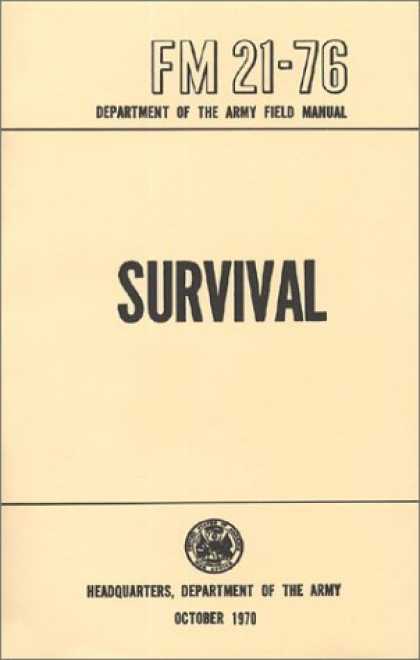
This is a very straightforward and to-the-point survival manual with field-tested survival techniques bought and paid for by hard-earned US tax dollars. This manual is packed full of great survival know-how and should be in every survival library.
Back to Basics by Abigail Gehring

This book is packed full of practical pioneer-type homesteading skills such as growing food, canning, keeping chickens, generating energy, and herbal medicine. This is a great read for anyone interested in the nuts and bolts of living like our grandparents did at the turn of the century.
Basic Safe Travel and Boreal Handbook by Mors Kochanski

One of the best books written about surviving in the north woods and Canada. Mors is one of the most articulate and intelligent survival authors I have ever read. He has several smaller ebooks available (some mentioned later) that are excellent reads and are very inexpensive. I own pretty much all of them. Some of my favorites are: Basic Wilderness Survival in Cold Lacking Snow, Fire Skills of the Northern Forest, The Lean-To and It’s Variants, A Survival Kit Shelter, and Top Seven Knots.
Outdoor Survival Skills by Larry Dean Olsen

Larry is truly a master of the primitive arts and is an icon in the world of primitive survival skills. His use and skill with natural materials such as leather, bone, rock, and wood are unparalleled. Whether making a bow and arrow or tanning hides, this guy teaches a huge variety of primitive skills.
US Air Force Pocket Survival Manual

This is my favorite of the government survival manuals. I really like the illustrations and it seems to contain a bigger variety of skills. There is also a huge section on the psychological effects of survival and evasion. Most survival guides lack in these categories.
Build the Perfect Bug Out Bag: Your 72-hour Disaster Survival Kit by Yours Truly – Creek Stewart

If you haven’t yet begun the process of building a Bug Out Bag, this book is a great start. It’s more of a manual to help get it done than it is a survival skills book, but I do list tons of survival tips and tricks for getting the biggest bang for your buck when building a Bug Out Bag.
Shelter
Many of the books in the Survival Skills category above cover shelter in one way, shape, or form, but the books below discuss this topic almost exclusively.
The Lean-To and It’s Variants Used in Survival and Bush Bough Beds by Mors Kochanski

One of the best cold weather shelter reads available. I love Mors’ intellectual approach to survival and shelter building.
The Super Shelter by Mors Kochanski
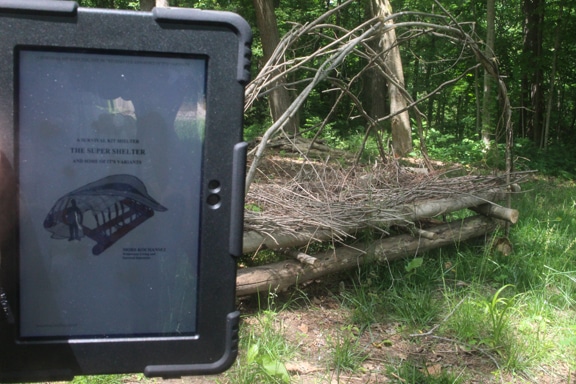
Mors pretty much invented the “super shelter” design which uses plastic sheeting and mylar blankets to create an amazing cold weather survival shelter.
Shelters, Shacks, and Shanties by D.C. Beard

From lean-tos to log cabins, mountain man shelter ideas abound in this book. This is one that will make you want to go out, build a fort in the woods, and sleep there.
Water
Titles in this category deal almost exclusively with finding, collecting, filtering, and purifying wild water.
Harvesting H2O by Nicholas Hyde

An excellent discussion about the collection, treatment, and storage of water while living off the grid.
Water Purification by Will Jameson
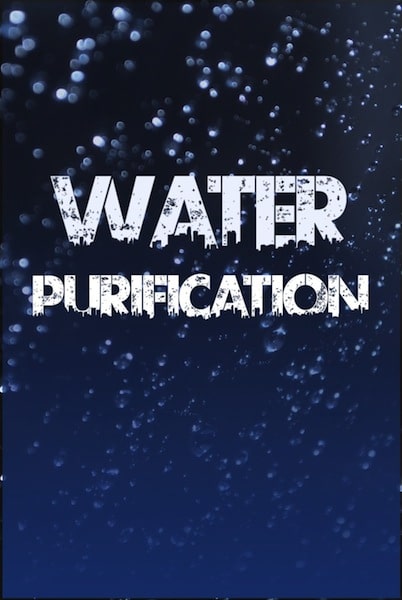
An incredibly thorough discussion about water purification, storage, and acquisition.
Water 4 Survival by Paul Andrulis

Another helpful read about finding water, determining whether it’s safe to drink, and teaching how to make it safe for consumption.
Fire
I’ve only listed one title in this category, as many of the titles in the Survival Skills category discuss fire in great detail and are excellent fire resources.
Fire Skills: 50 Methods for Starting Fires Without Matches by David Aman

This is a great primer in exploring many different methods of making fire. It lists 50 different fire-starting methods, some of which are very inventive and fun. Reading this book will not make you a fire master; only practicing fire starting will do this, but you can use this book to get different ideas to challenge your skills and broaden your knowledge base.
Food
Whether foraging for wild foods or stockpiling your own, these titles deal exclusively with sustenance.
21 Native Wild Edible Plants by Mors Kochanski

This inexpensive ebook is worth the money simply to read Mors’ discussion on the plants listed. The line drawings aren’t much for reference so you’ll need a better photo guide for that, but it’s the words that are important in this book. I like that this little guide just covers a few plants because that fits into my personal 80/20 wild edible plants rule which states: “FOCUS on the 20% of the wild edible plants you see 80% of the time. FORGET the rest!”
Wild Edibles by Sergei Boutenko
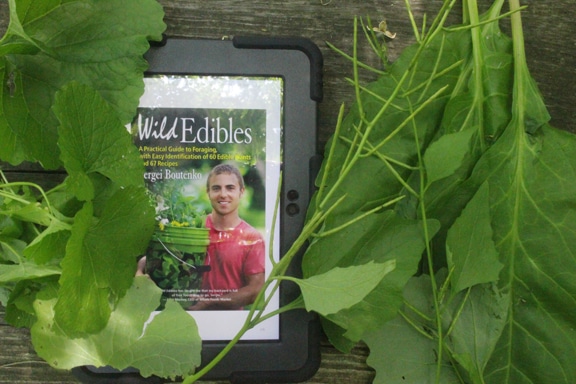
Sergei is an enthusiastic author and wild edible plant fanatic. I really enjoy his approach to wild edibles. His photos are some the best I’ve seen and his discussions are easy to understand and straight to the point. He covers 60 plants in this book.
The Trapper’s Bible by Dale Martin

This is an older title which discusses traps and snares exclusively. This is a great read for studying a variety of trap triggers and designs. I personally really enjoy the study of traps so this one is one of my personal favorites.
Harvesting Wild Meat by Stephen Coote

This New Zealand author has put together a really fun read about primitive trap designs. His personal insights are really helpful. I really enjoy leafing through this title and looking at the different trap designs.
Food Storage for Self-Sufficiency and Survival by Angela Paskett

Angela is a personal friend of mine and she practices what she preaches. I would consider this a definitive guide in learning and understanding best practices when it comes to long-term food storage. She covers everything from types of containers to methodology. If you’re looking to stockpile your survival pantry, this read is for you.
Backyard Foraging by Ellen Zachos

This is a great wild edible plant book covering 65 plants you didn’t know you could eat. There is certainly some redundancy with other titles mentioned, but this book is a good stand alone resource for eating your backyard!
The Hunter’s Guide to Butchering, Smoking, and Curing Wild Game and Fish by Philip Hasheider

This book delivers on the title. It teaches you exactly what it says it’s going to. The description and photos are all excellent and coincide with everything I’ve been taught and learned on my own over the years.
Build Your Own Underground Root Cellar by Phyllis Hobson

An underground root cellar has been on my project list for several years and this is the book I purchased to help get the job done. It’s a great little read. This title is part of a series of very informative ebooks called Storey Country Wisdom Bulletins. You may consider a search for this in Amazon, as there are many other titles that may pique your interest.
Recipes and Tips for Sustainable Living by Stacy Harris

Preparing wild foods can be tricky. Stacy flattens the learning curve for you with this book of recipes and tips. With this book, there is no reason your survival meals should be anything short of fantastic. The photos alone will make you want to grab that old 12-gauge and hit the woods.
Urban Foraging by David Craft

This title might be of interest to all of you city dwellers. I enjoyed the urban angle of searching for wild edibles in the city. There is literally food around every corner!
All New Square Foot Gardening by Mel Bartholomew

I love this author’s approach to gardening. He is all about growing more in less space and it just makes sense. His methodical approach to planting in a square-foot design is impressive to say the least. My personal experiments from the skills taught in this book have proven successful beyond measure and I highly recommend this style of growing for any gardening enthusiast.
First Aid
The need for first aid supplies and services go through the roof during disaster and survival scenarios. These are also the first services to become overwhelmed and unavailable. The ability to provide for yourself and loved ones with basic first aid is critical. These books will help.
Where There Is No Doctor by David Werner

Don’t expect to read this in one sitting – it’s LONG! It covers medical advice for everything from toothaches to survival childbirth. I would consider this manual an indispensable guide in any survival library. The premise of the book is that medical knowledge should not be a guarded secret by a select few, but should be freely shared by everyone, and that ordinary people who are provided with clear, simple information can prevent and treat most common health problems in their own homes.
Outward Bound Wilderness First-Aid Handbook by Jeffrey Isaac

I like the wilderness-specific angle of this title. If it can happen in the outdoors then it’s probably covered in this book. From altitude illness to constipation, this is a no-nonsense guide to address first aid issues in the wilderness. Outward Bound is a very reputable organization and this handbook has become a classic resource for adventurers all over the world.
The Survival Medicine Handbook by Joseph and Amy Alton
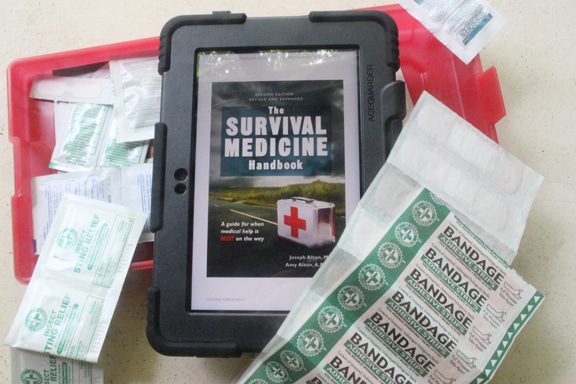
I especially like this title because it’s written by preparedness-minded people for preparedness-minded people. They write from the perspective of asking, “What if access to modern medical facilities no longer exists?” They do not end each scenario or sentence with, “Go to the hospital.” I like that. This is an A-Z medical guide for true survival scenarios written in plain English.
Documents
One cool thing about the kindle (at least the newer models) is that you can upload PDFs into an accessible documents area for easy reference. The sky is the limit when it comes to this option. From maps and GPS coordinates to addresses and telephone numbers, this puts literally any kind of information that you wish at your fingertips in the middle of a bug out scenario. I’ve loaded tons of medical documents such as antibiotic doses and measurements to this folder. I also include chemical water purification ratios and PDF manuals for some of my electronics, such as my handheld HAM radio.
This feature, which some e-readers lack, gives you the option of loading personal documents such as insurance paperwork, pet shot records, marriage licenses, bank information, and the like for easy reference. I prefer to keep my personal documents on a secure, password-protected thumb drive, but the Kindle is a great option for less sensitive information.
One other category worth mentioning within this heading is games. I know this sounds crazy initially, but a few games can be a huge asset when bugging out with young children. Anything to distract their minds from the craziness is a good thing. An idle mind leads down troubled paths. Many simple games can be downloaded free of charge.
Protection and Power
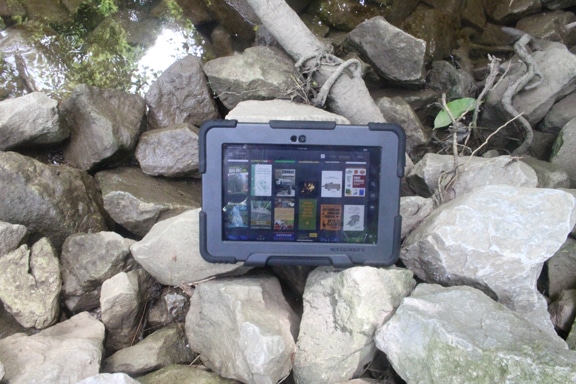
Protecting and powering your Bug Out Kindle are two absolute requirements. If both of these options were not possible, a Kindle would not be included in my Bug Out Bag. Options abound when it comes to both.
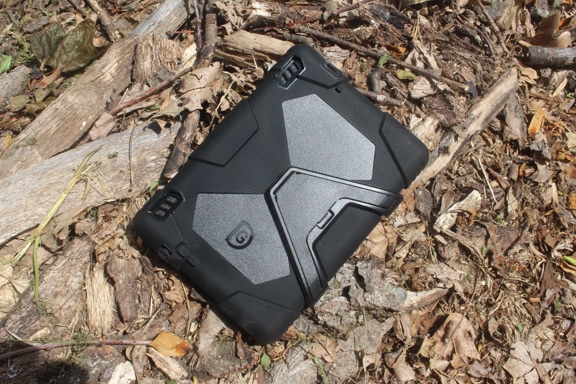

Military-grade cases and covers are readily available on-line that are shock-resistant and waterproof – two absolute bug out necessities. A durable waterproof sleeve or map case will suffice at a bare minimum.

Solar power and manual crank USB chargers are readily available as well. Most hand crank emergency radios now have a USB charger built in, which will power the Kindle. Stand alone Pocket Sockets are also available. I prefer the hand crank power options for recharging, but I have several friends who swear by solar. Ultimately, it’s a personal choice.
Conclusion
Packing a sizable survival library along with hand-picked PDFs which catalog a plethora of facts and references in your Bug Out Bag just makes survival sense. Affordable portable power and protective cases make a Bug Out Kindle a very feasible and practical survival tool that can handle the worst of scenarios. The built-in camera and video features allow the capture of important information for future reference as well.
Albert Einstein once said, “Information is not knowledge.†This is true. However, access to information about a subject which you’re not knowledgeable can be a huge survival advantage. In survival, I’ll take every competitive advantage I can get, including a Bug Out Kindle.
Remember, it’s not IF but WHEN,
Creek
Be sure to listen to my podcast interview with Creek for even more:
___________________________________
Creek Stewart is a Senior Instructor at the Willow Haven Outdoor School for Survival, Preparedness & Bushcraft. Creek’s passion is teaching, sharing, and preserving outdoor living and survival skills. Creek is also the author of the book Build the Perfect Bug Out Bag: Your 72-Hour Disaster Survival Kit. For more information, visit Willow Haven Outdoor.


